June 10, 2024
The 4 fundamental aspects that influence animal welfare
par AKONGO
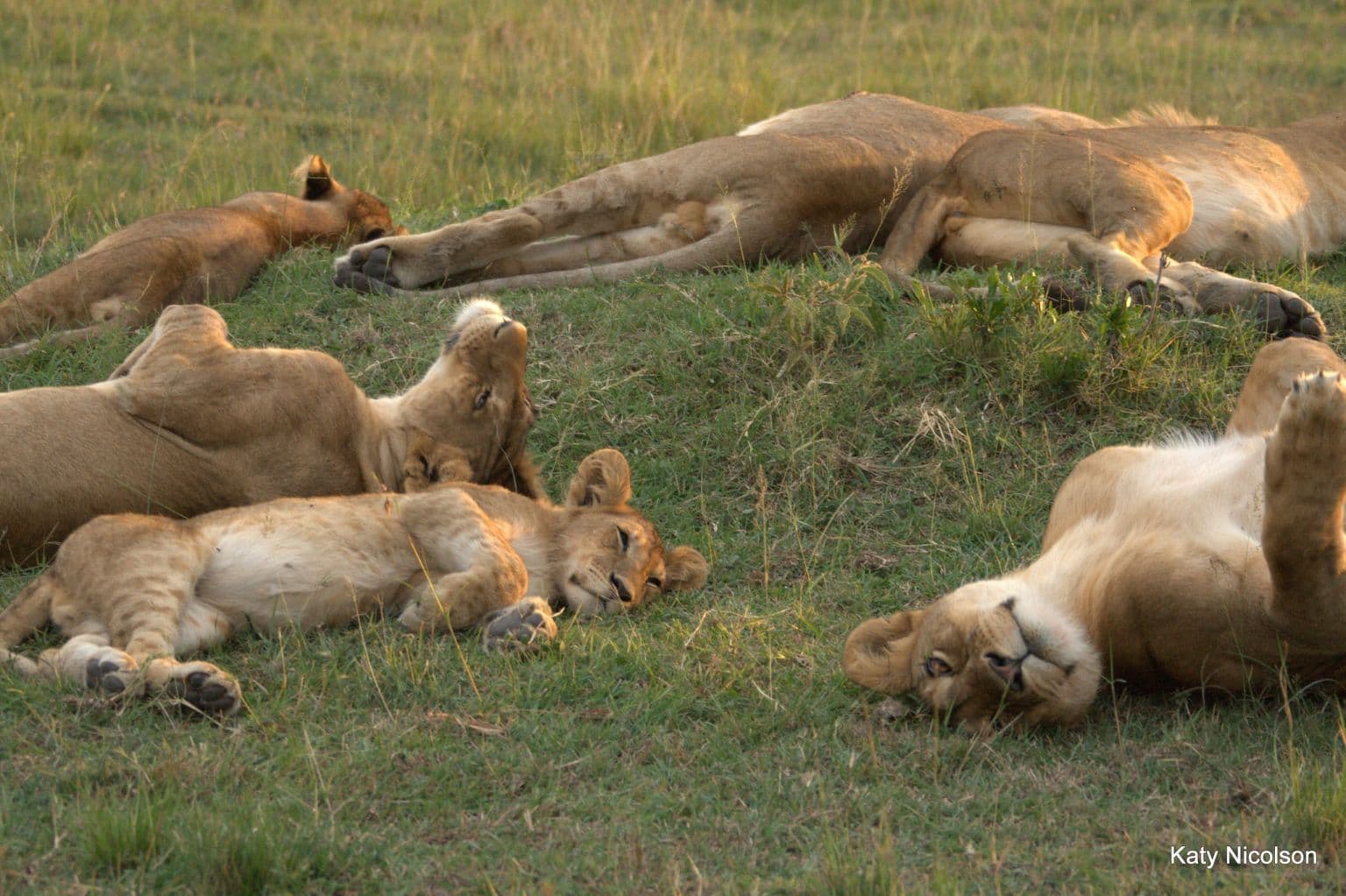
In our previous article, we discussed that an animal's welfare is defined as an individual state that varies over time, depending on the animal's subjective perception. Species characteristics, the environment, conspecifics, relationships with humans and the ability to make choices and exert control... are all factors that influence an animal's welfare state.
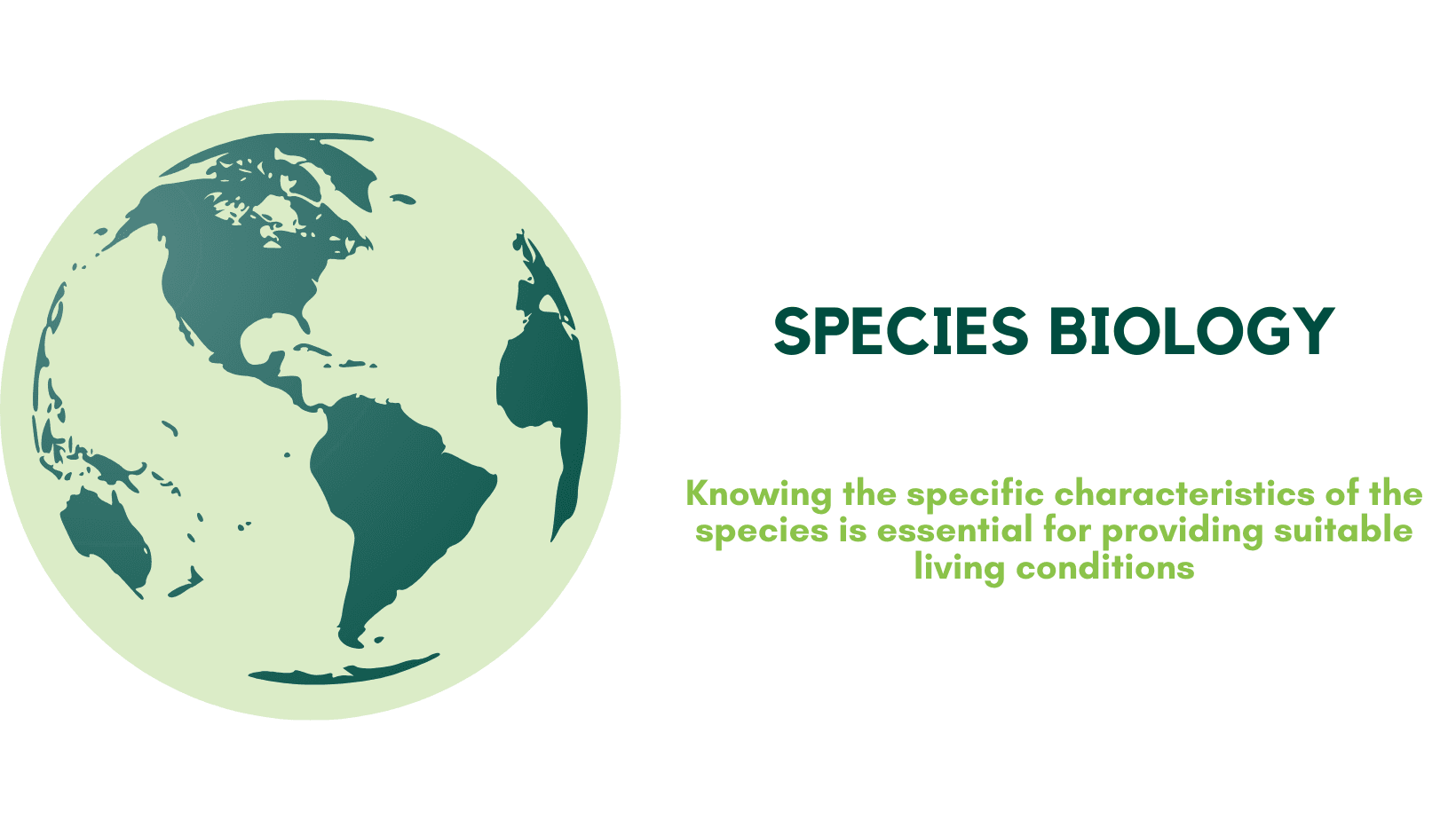
First of all, considering the biological characteristics of the species is a key point: diet, geographical distribution, social organisation, communication methods, cognitive abilities, and so on - these are all aspects to be understood before accomodating a species.
For example, tolerance thresholds for ambient temperature differ between species. In foxes, for instance, the temperature at which we observe a change in blood flow to the extremities (a phenomenon of vasoconstriction, which can be painful) varies by species: approximately -10°C for the Arctic fox, -5°C for the red fox, and around 10°C for the fennec fox (Klir & Heath, 1992 ; Maloly et al., 2009). In captivity, it is therefore essential to adapt infrastructures according to the climate experienced by the animals locally (by ensuring, for example, that a fennec fox housed in France always has access to a temperature above 10°C).

- Cold sensitivity varies among foxes (all belonging to the genus Vulpes), ranging from -10°C (Arctic fox - V. lagopus) to 10°C (Fennec fox - V. zerda). These animals inhabit very different environments and are specifically adapted to their surroundings. Since these three species are present in several French and European zoos, it is essential to adjust housing and management conditions throughout the seasons.

All aspects of an animal’s living environment can impact its welfare. The living environment includes both the physical surroundings (e.g., enclosure and building) and the social environment (conspecifics, other species present and humans). Factors such as the presence of vegetation, the diversity of structures and substrates, visual barriers to hide from visitors or other animals, the existence of microclimates (shaded, sunny, or sheltered areas), variations in lighting, and more can play a role. Additionally, the composition of the social group (whether it's a breeding group, familial relationships, etc.), the quality of relationships between animals (aggression, distance, or conversely, proximity), and interactions with the animal care team (e.g., whether the animal is stressed, shy, or comfortable, and the team's knowledge of the animals' relationships and individual preferences) are important. When considering the quality of an animal’s environment in captivity, it is therefore essential to ask:
- What opportunities and resources are available to the animal?
- Are they in line with the animal's biological needs?
- How does the animal make use of them?
For example, two recent studies on corn snakes (Pantherophis guttatus) showed that the snakes preferred ‘enriched’ enclosures, which contained a variety of structures (e.g., plants, branches, shelters, perches, etc.) and enclosures that were long enough to allow them to fully stretch out, compared with ‘standard’ enclosures (fewer structures or shorter than the length of the animal; Hoehfurtner et al., 2021a, b). These enriched or adequately sized enclosures provided far more opportunities for the animals to express their natural behaviours (settling at height, exploring their environment, moving across their full length, etc.) compared to simpler or smaller enclosures. Finally, when housed for extended periods, complex or longer enclosures were far more beneficial to the animals’ welfare (e.g., the animals were more relaxed, active, and exploratory) than ‘standard’ enclosures.

- When corn snakes are given the choice between two vivariums that differ either in complexity or length, they spend significantly more time in the complex vivarium, where they have a more structured usable space (elevated branches, pegboard, shelters, etc.; Hoehfurtner et al., 2021a) and in the long vivarium where they can fully stretch out (Hoehfurtner et al. 2021b).
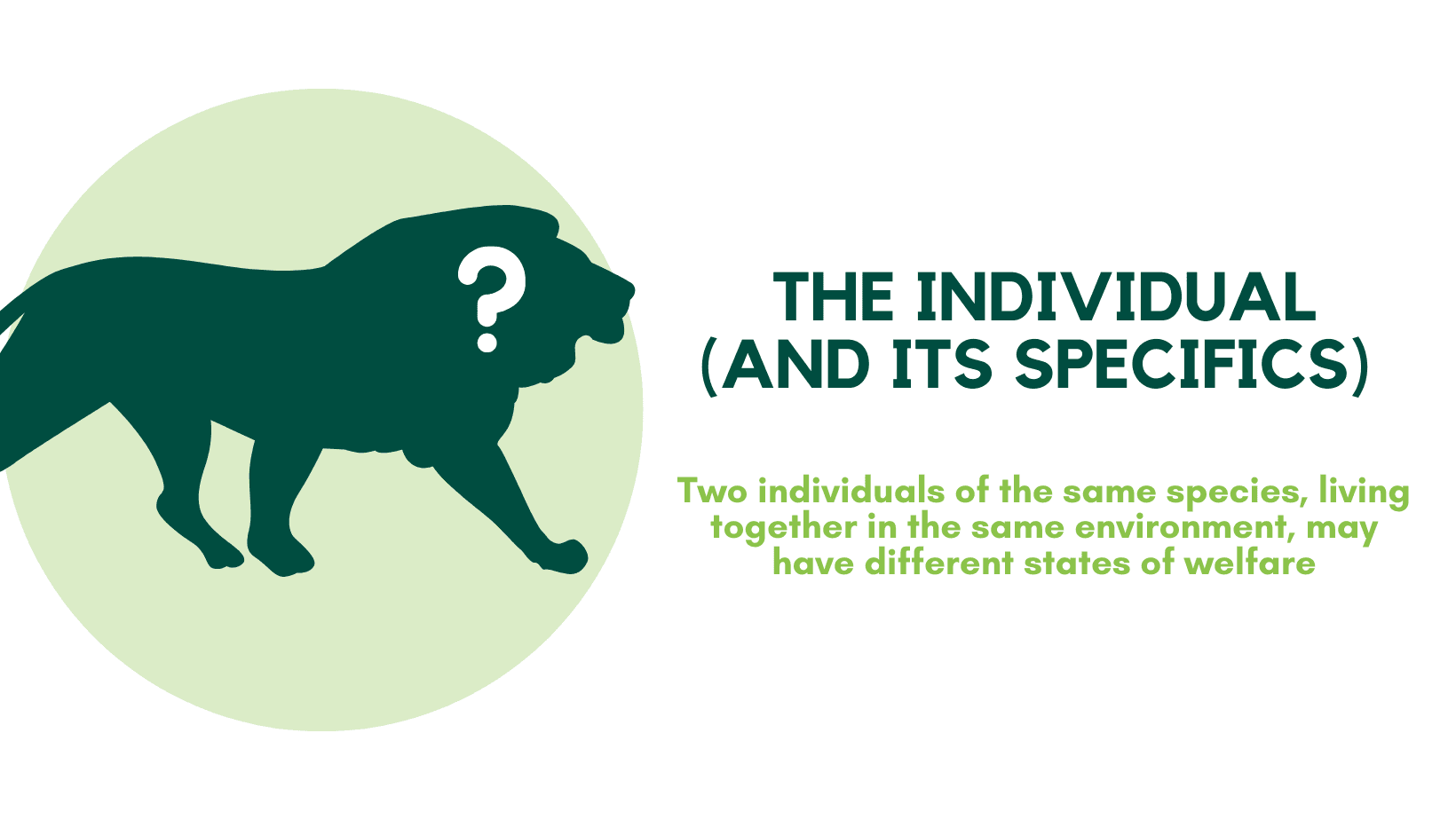
Individuals of the same species, living together in the same conditions, can experience different states of well-being. This is due to individual characteristics such as personality (e.g., shy or bold), social status (e.g., dominant or submissive), age (e.g., juvenile, mature or geriatric), or health (e.g., chronic illnesses, disabilities, etc.).
A study of Asiatic lions (Panthera leo persica) linked individual personality (bold vs. shy) and well-being (Goswami et al., 2020). Animals described as ‘shy’ (aggressive, not very active, not very curious, wary, fearful) used their enclosure less uniformly (e.g., avoiding certain areas), exhibited a lower diversity of species-specific behaviours and showed more stereotypical behaviours compared to ‘bold’ individuals (social, active, curious, extroverted, confident).
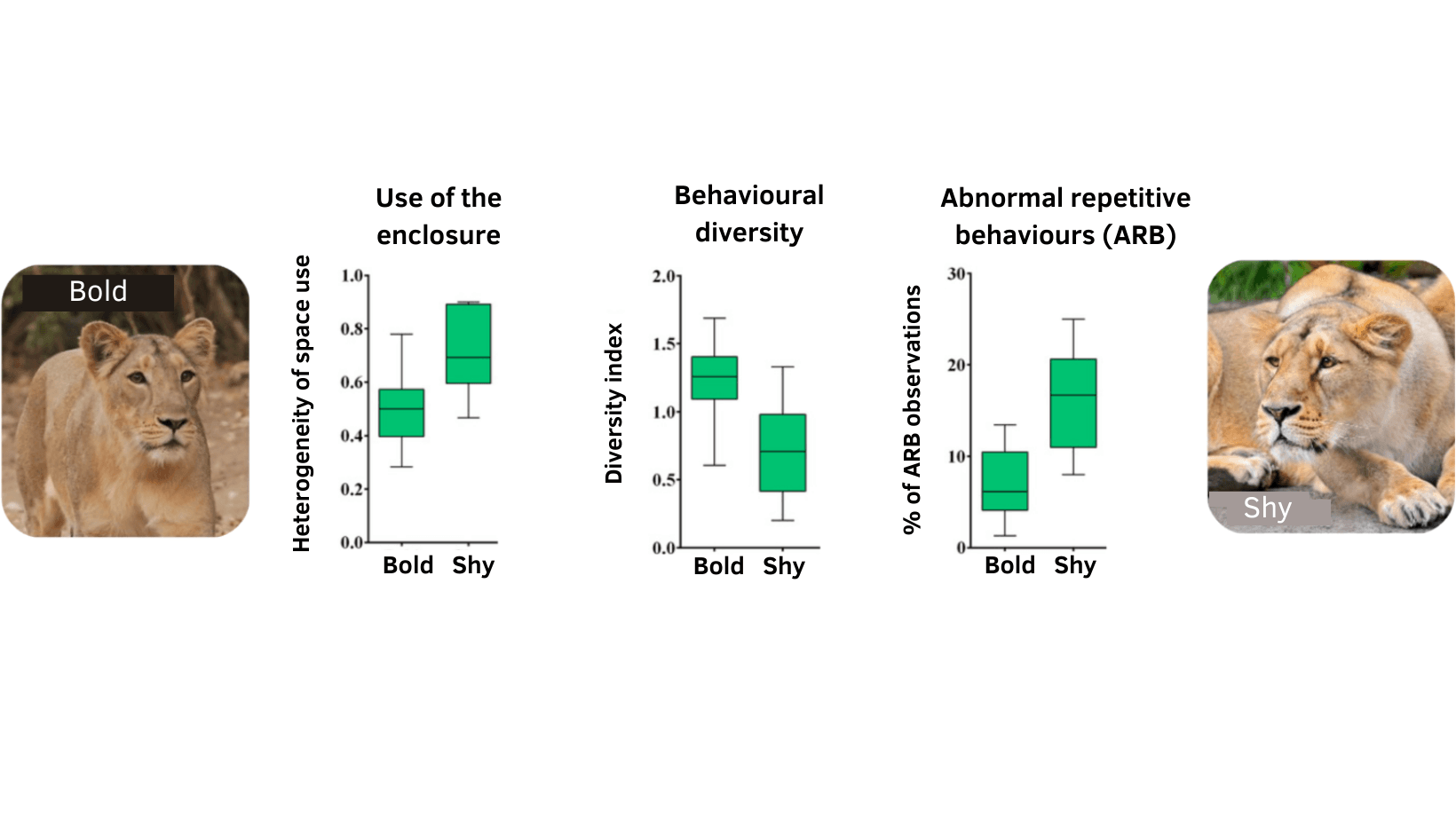
- In Asiatic lions, individuals labelled as 'shy' use the enclosure more unevenly (e.g., showing preferences for certain areas and avoiding others), display a lower diversity of species-specific behaviours and exhibited more aberrant repetitive behaviours (ARB) than their ‘bold’ conspecifics (adapted from Goswami et al., 2020).

In zoos, the benefits and constraints differ from those in the wild. For instance, animals benefit from enhanced health monitoring, care for injuries or illnesses, regular access to food, and the absence of predators. However, the available space is limited, they cannot move freely (e.g., restricted access at night), and they have no choice over their diet, companions, etc. Yet, an animal's welfare state is tied to its ability to choose and control its environment (Whitham, 2013). Therefore, when observing an animal’s living environment, we should ask to what extent the animal can decide:
- What it wants to do (e.g., observe visitors);
- What it is able do (e.g., search for food);
- And when it can do it (e.g., rest in a quiet spot in the late afternoon)?
The management approach of a zoo greatly influences the level of control and choice afforded to the animal (Veasey, 2017). The more the management relies on human actions, the less choice and control the animal will have (e.g., fixed feeding times, no free access at night, lack of vegetation or foraging opportunities in the enclosure). Conversely, a management approach that focuses on the environment and meets the animal’s physical and social needs will provide numerous opportunities for control and choice (e.g., different microclimates, substrates, free indoor-outdoor access, hiding places, the ability to forage throughout the day, etc.).
Nevertheless, while environmental complexity is a fundamental principle, its adaptation to the needs and physical abilities of the animal is even more crucial to ensure that it can use the environment fully and independently (e.g., elderly individuals, young, disabled, etc.). For example, in primates, the use of both ground and elevated equipment connected together, or ropes of varying diameters to ensure proper grip, takes into account the capabilities of each individual.
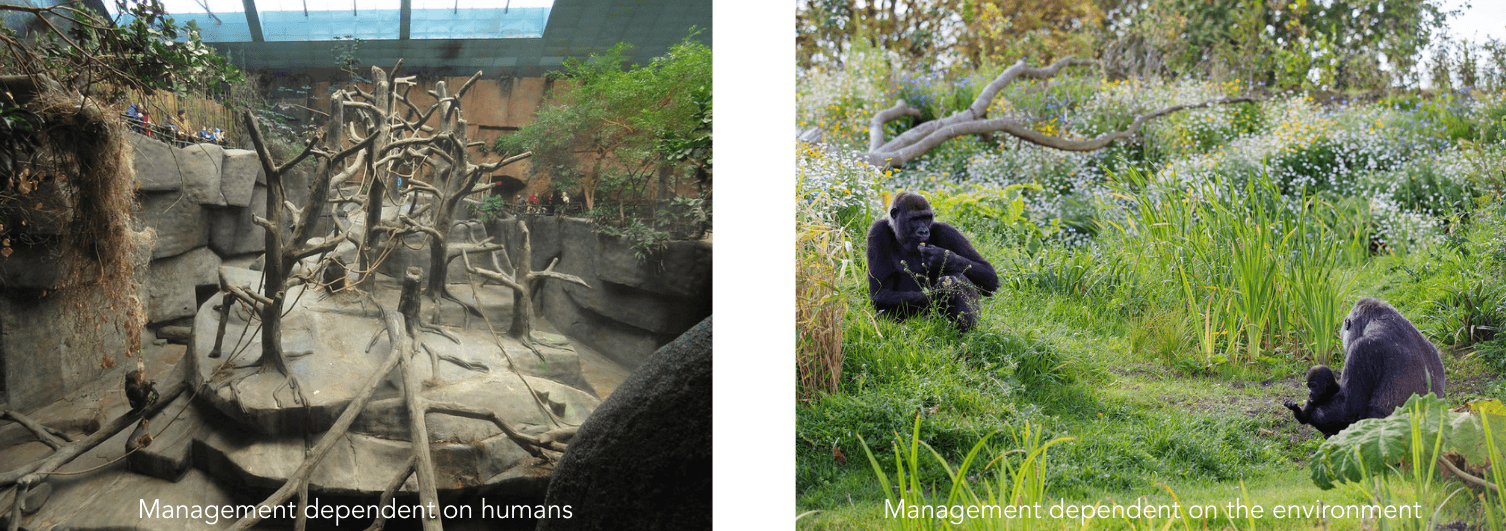
In the enclosure on the left, the animals have access to an indoor-only space (with little climatic variation). More importantly, visitors have an overhead and 360° view, which means these gorillas have no opportunity to hide if they wish. In the wild, gorillas are both terrestrial and arboreal, tending to stay on the ground in heavily vegetated areas and climbing to heights to observe their surroundings and feed. However, in this enclosure, the floor is made of concrete with no soft substrate, the minimal vegetation present is not accessible to the animals and thus not very useful, and the trees, while accommodating the gorillas' natural climbing tendencies, are artificial and provide neither foliage nor fruit. In this enclosure, no variation is possible without systematic human intervention, whether intentional (e.g., addition of straw by keepers, food distribution) or accidental (e.g., when visitors drop something). The animals therefore have very little choice or control over what they can do. In contrast, the enclosure on the right offers numerous opportunities independent of human intervention (e.g., accessible, dense, and varied vegetation, an outdoor enclosure with climatic and light variations, etc.).
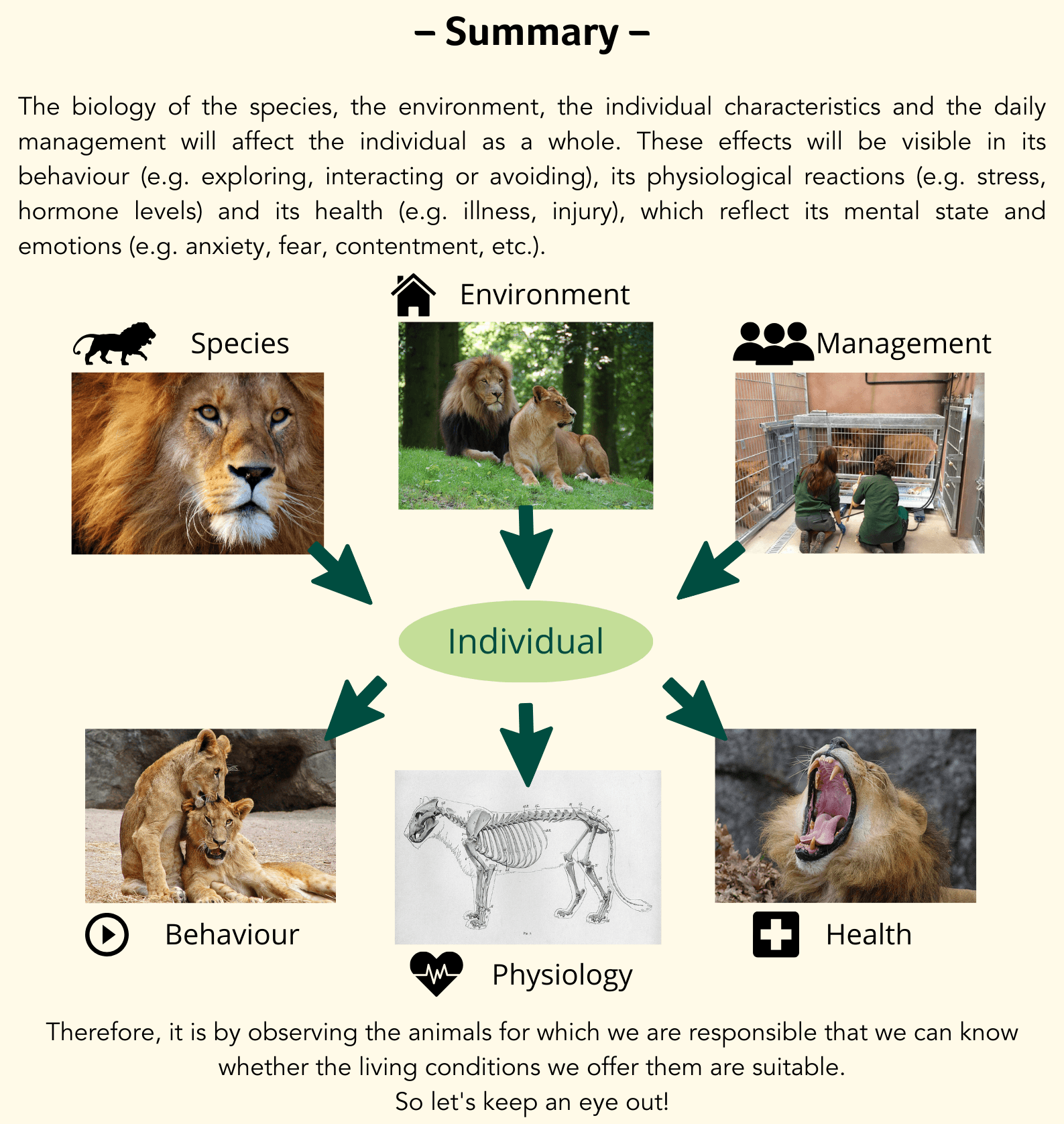
Bibliographical references
Goswami, S., Tyagi, P. C., Malik, P. K., Pandit, S. J., Kadivar, R. F., Fitzpatrick, M., & Mondol, S. (2020). Effects of personality and rearing-history on the welfare of captive Asiatic lions (Panthera leo persica). PeerJ, 8, e8425. https://doi.org/10.7717/peerj.8425
Hoehfurtner, T., Wilkinson, A., Nagabaskaran, G., & Burman, O. H. (2021). Does the provision of environmental enrichment affect the behaviour and welfare of captive snakes?. Applied Animal Behaviour Science, 239, 105324. https://doi.org/10.1016/j.applanim.2021.105324
Hoehfurtner, T., Wilkinson, A., Walker, M., & Burman, O. H. (2021). Does enclosure size influence the behaviour & welfare of captive snakes (Pantherophis guttatus)?. Applied Animal Behaviour Science, 243, 105435. https://doi.org/10.1016/j.applanim.2021.105435
Klir, J. J., & Heath, J. E. (1992). An infrared thermographic study of surface temperature in relation to external thermal stress in three species of foxes: the red fox (Vulpes vulpes), arctic fox (Alopex lagopus), and kit fox (Vulpes macrotis). Physiological zoology, 65(5), 1011-1021. https://doi.org/10.1086/physzool.65.5.30158555
Maloiy, G. M. O., Kamau, J. M. Z., Shkolnik, A., Meir, M., & Arieli, R. (1982). Thermoregulation and metabolism in a small desert carnivore: the Fennec fox (Fennecus zerda)(Mammalia). Journal of Zoology, 198(3), 279-291. https://doi.org/10.1111/j.1469-7998.1982.tb02076.x
Veasey J. S. (2017). In pursuit of peak animal welfare; the need to prioritize the meaningful over the measurable. Zoo biology, 36(6), 413–425. https://doi.org/10.1002/zoo.21390
Whitham, J. C., & Wielebnowski, N. (2013). New directions for zoo animal welfare science. Applied Animal Behaviour Science, 147(3-4), 247-260. https://doi.org/10.1016/j.applanim.2013.02.004